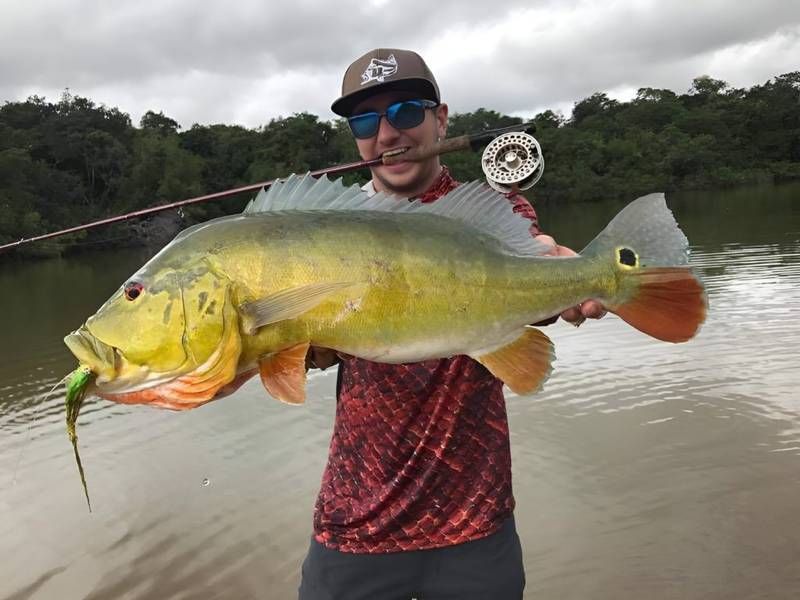Sport fishing regulations are essential to promote the responsible and sustainable practice of this recreational activity. They are set by governments, conservation agencies and organizations responsible for the management of fishery resources, with the aim of preserving aquatic biodiversity and ensuring the conservation of ecosystems. Let’s explore some of the main sport fishing regulations:
Minimum sizes and catch quotas:
Many regions have regulations that establish a minimum size for catching fish in order to protect young specimens and ensure the reproduction of species. In addition, some areas also impose catch quotas, limiting the amount of fish an angler can catch in a given period.
Fishing season:
- Fishing seasons may be established to protect species during their reproductive periods or when they are most vulnerable. During these periods, there may be fishing restrictions or bans, ensuring the sustainability of fish stocks.
Restricted or prohibited fishing zones:
- Some fishing areas may be designated nature reserves, parks or conservation areas where fishing is restricted or prohibited. These measures are intended to preserve critical habitats and vulnerable species.
Regulation of alien or invasive species:
- Specific regulations may be applied to control the spread of exotic or invasive species, which may cause damage to native ecosystems.
Capture and release:
- Many places encourage or require the practice of “catch and release,” in which anglers release the fish after catching it. This measure is intended to reduce the impact of fishing on fish stocks and to preserve them.
Use of hooks and fishing techniques:
- Some regions may prohibit the use of barbed hooks or impose restrictions on certain fishing techniques to reduce injury to fish and improve post-release survival rates.
Licenses and registrations:
- Most places require obtaining a valid fishing license to engage in sport fishing. These licenses are issued to control the number of anglers and raise funds for the conservation of fish stocks.
Care for the environment:
- The rules also include guidelines on proper garbage disposal, restrictions on the use of bait or materials harmful to the aquatic environment, and other environmentally friendly practices.
Compliance with sport fishing regulations is the responsibility of all anglers. Respecting the regulations is essential for the conservation of ecosystems and the sustainability of fish stocks. It also helps ensure that future generations will be able to enjoy this recreational activity.
Governments and conservation organizations play an important role in monitoring and educating fishermen about the regulations. They also promote awareness of the importance of responsible sport fishing and the preservation of aquatic resources. By respecting the rules, it is possible to enjoy ethical, sustainable and environmentally beneficial sport fishing.
What is considered predatory fishing?

Predatory fishing is a practice that causes serious damage to aquatic ecosystems and fish stocks. The excessive and unsustainable capture of fish and other aquatic species characterizes it. It is an activity that disregards the principles of responsible and ethical fishing. This results in negative repercussions for the environment, resource-dependent communities and aquatic biodiversity.
Some of the behaviors and characteristics that are considered predatory fishing are:
Overharvesting:
- Predatory fishing catches excessive numbers of fish relative to their reproductive capacity. The practice causes a decline in fish populations, threatening the survival of the species. It also causes imbalances in aquatic ecosystems.
Capture of endangered species:
- Predatory fishing often includes the capture of endangered species or species protected by conservation laws. These actions aggravate the risk of extinction of these species and endanger the biodiversity of aquatic environments.
Use of prohibited or destructive fishing techniques:
- Predatory fishing may involve the use of prohibited or highly destructive fishing techniques, such as blast fishing. Additionally, these practices include the use of bottom trawls, which damage the seabed, and the poisoning of water bodies.
Illegal or unlicensed fishing:
- Predatory fishing also includes fishing activities conducted without legal authorization or a valid license. The lack of adequate regulation and supervision allows fishermen to fish outside established limits. This contributes to the unbridled exploitation of fishery resources.
Lack of respect for reproductive seasons:
- Predatory fishing does not take into account the reproductive periods of the species, catching fish during their most vulnerable time. This endangers the reproductive cycle and the renewal of fish stocks.
Discarding of unwanted catches:
- In some predatory fishing practices, fishermen discard accidentally caught fish, often dead, by throwing them back into the sea. This contributes to waste and has a negative impact on ecosystems.
Overfishing is a serious global problem that threatens the sustainability of fish stocks and the health of aquatic ecosystems. To combat this practice, it is essential that governments, conservation agencies and society as a whole become involved in enforcement. This involvement must also include regulation and education about the importance of responsible and sustainable fishing.
Adopting ethical fishing practices, complying with regulations and respecting spawning periods are fundamental steps. Raising awareness of the impacts of predatory fishing is key to conserving fish stocks and preserving aquatic biodiversity.





